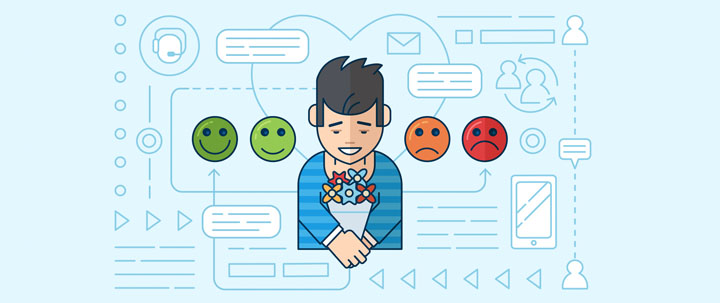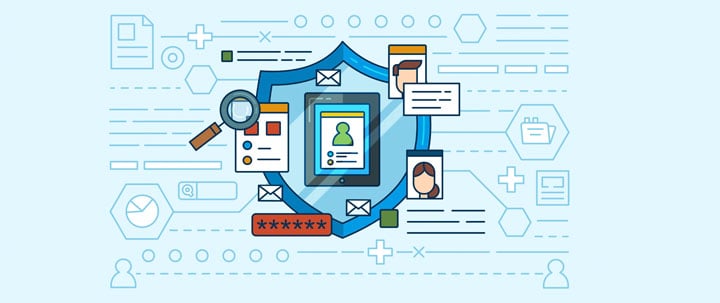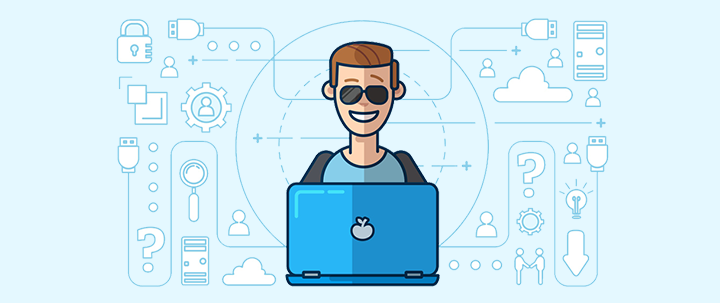Every MSP and IT help desk should be concerned with how well they measure their service's effectiveness. In order to grasp how well your IT help desk is performing, you should be looking at various metrics and KPIs.
But before we dive into which metrics and KPIs you should be tracking, it’s useful to understand the difference between the two if you want to effectively manage your progress.
In its simplest terms, KPIs and metrics are both quantifiable measures of activity. Meaning, they provide you with data you can express as a quantity. KPIs are a measurement of strategic activity normally related to an overarching business goal or objective. In other words, the KPIs tell you how close you are to achieving that goal.
Metrics are a measure of tactical activity but reflect how close you are to achieving your KPIs. Let's look at some of the best KPIs and metrics you should track for your IT help desk.
Number of Support Tickets
It’s important to keep track of how many support tickets you receive each week, day, or month. However, looking at an arbitrary number might not be helpful. Data without context is irrelevant. Therefore, you should be looking at how the number of support tickets correlates with your business development.
For instance, suppose you release a new feature and see a sudden increase in support tickets, you should investigate the issue and find the root cause.
Customer Satisfaction Score (CSAT)
The main issue with measuring your customer satisfaction score is it often deals with emotions. We’ve already mentioned that metrics and KPIs deal with quantifiable data. However, with the right questions, you can still garner a good response. How to calculate CSAT:
TOTAL OF CUSTOMER RESPONSES /
TOTAL NUMBER OF RESPONDENTS
There are various ways you can calculate your CSAT and one of the most popular ways is to use a star, smiley or symbol system.
This type of data is commonly seen in airports
Userlike, a live chat software, uses a star system to give customers a chance to let the company know their general thoughts about the support they’ve received. Customer satisfaction scores are useful for when you need to keep track of how each help desk personnel is handling each individual case.
Net Promoter Score (NPS)
Net promoter score (NPS) is similar to the customer satisfaction score in that it asks customers what they think about the service. However, normally customer satisfaction scores are based on one initial chat and are on a chat-by-chat basis. This is because while you might be satisfied with the support the help desk has given you one time, you may not the next.
The net promoter score goes one step further and asks how likely a customer is to refer you to someone else within their own network.
Because this focuses on the intentions of the customer, rather than their emotions (like CSAT), you’re more likely to receive answers that are less influenced by people’s specific moods at any given time.
To calculate NPS, ask your customers how likely (on a scale of 1-10) they are to recommend you and your help desk service.
NET PROMOTER SCORE (NPS) SURVEY QUESTION
Considering your complete experience with our company, how likely would you be to recommend our products to a friend or colleague?
Each individual reply will see a user in one of three categories:
0-6 THESE PEOPLE ARE DETRACTORS
7-8 THESE PEOPLE ARE PASSIVES
9-10 THESE PEOPLE ARE PROMOTERS
Now, to give yourself an accurate view of this data, use the following equation:
(% OF PROMOTERS) - (% OF DETRACTORS) /
(NUMBER OF RESPONDENTS) X 100
It’s good to note that although your answer will appear as a percentage, NPS scores are usually shown as a whole integer (70 as opposed to 70%).
Also remember your score can be anything from -100 to +100, based on how many promoters or detractors you have within your survey responses.
First Response Time
First response time simply refers to how long it takes your IT support staff to respond and answer your customer’s queries. A study by Nielsen-McKinsey found 33% of respondents say they’d recommend a brand that offered a quick but ineffective response.
This highlights the importance to get this metric under control and figure out ways you can increase your first response time.
The most obvious way to increase your first response time is to hire more IT help desk agents to ensure there are enough support personnel to meet the demand of requests. However, this can often be a costly approach, especially if your help desk is new and a small team.
Instead, consider using a high level of automation to send an immediate message letting the user know that someone is looking into their case. This way, you can provide immediate comfort for frustrated customers and provide you with a little extra time to respond to their query.
Note: an automated message is not a replacement for an actual person responding to their request. You should still try to get back to them as fast as you can. A great way to understand how your support team is working and whether you need to increase the number of personnel you hire is to look at the correlation between ‘number of support tickets' and ‘first response time’.
If your first response time increases as your number of tickets increases, you can infer that you need more people manning your help desk.
However, if your first response time decreases (or stays the same) as the number of tickets increases, you can infer that you have a system in place that allows your help desk to scale effectively.
First Contact Resolution
First contact resolution (FCR) differs from first response time in that it calculates the percentage of support issues that are resolved by the first contact with a customer. If you’re talking to your customer via webchat, it means their issues are solved before the chat ends. The same goes for phone support.
You calculate this by:
NUMBER OF ISSUES RESOLVED ON THE FIRST CONTACT /
TOTAL NUMBER OF CUSTOMER CONTACTS
Remember, an issue is only resolved if and when the customer says they’re resolved. This is a useful metric to help you get to the root causes of problems and provide alternative solutions so that customers reach a resolution quicker.
Helpdesk Staff Engagement
If you want to build a strong, reliable team, you shouldn’t just look at output metrics (what your help desk staff do) but how they feel too. Because remember, when your workers are happy and appreciate the work and the company they work for, they're much more likely to work harder.
You already know that working in a help desk is a tough job. You don't want your staff to experience burnout. So, in order to measure your employee's work satisfaction, you should be regularly taking the time to ask your staff questions like:
• How meaningful is the work you’re doing?
• Do you believe your work opinions matter to your supervisor?
• Do you feel confident to ask for help when needed?
• Are you proud to be a member of your team?
• Do you feel as though you have the resources needed to do your job most effectively?
Remember, although this post is highlighting the key metrics and KPIs you should be following, customer support is all about people more than numbers, so once you start treating your people right, you’ll equip them with the knowledge and know-how to treat your customers right.
If you want to keep your staff engaged, consider how much you invest in your employees’ training. If you fail to invest in your staff, you’ll find they’re unable to keep up with the demand as you scale your help desk. Likewise, if you fail to develop their skills, you might find they leave to seek that development elsewhere.
Abandon Rates of Calls
We mentioned sending your customers satisfaction surveys after they’ve finished their chat, but what about those who don’t finish their chat?
Your call abandon rate allows you to analyze whether you need to take secondary measures to implement protocols like call-backs for abandoned calls, or calls that never came through.
Average Resolution Time
The ultimate aim of any IT help desk should be to resolve your customer’s issues in the quickest time possible. Therefore, it’s important to track the average resolution time. Lower average resolution times means your support department responds to your customer’s queries faster.
High average ticket resolution means your support team is spending too long fixing issues. Long resolution times might be necessary for more complex issues. However, if you are consistently reporting high-resolution times, then it could mean that your team is understaffed.
One way to lower your average resolution time is to make sure that when a customer is handed over to a new support team member, that team member is briefed on the problem so far. This will stop the customer having to repeat themselves over and over.
Cost per Contact
You might not think it but each interaction your support team has with your customers is costing you money. After all, time is money.
You calculate it by:
(NUMBER OF CALLS PER HOUR) / (AGENTS WAGE IN HOURS)
This helps you work out what additional costs are needed to reach your goals. This might include adding more support agents.
However, do keep in mind that your staff with more experience and responsibility might cost you more per contact, simply because of the sorts of tasks they have to do and the salary that comes with that.
SLA Success Rate
A service level agreement (SLA) allows you to pre-define your IT Helpdesk services both internally and externally. Tracking how compliant your help desk staff are involves looking at the % of incidents resolved within the agreed SLA time. Ideally, you want to have the highest SLA compliance rate. SLAs are an indicator of the type of support you want to provide for your customers so an inability to comply with them tells you:
• Your service levels aren’t obtainable and should be altered
• Which areas need improvement and highlights weaknesses within your help desk
Average After Call Work Time
For many IT help desk queries, when you’ve taken the call, sent the email, or responded over instant message, often the work hasn’t ended. In many instances, customer support personnel will spend time telling their colleagues about the call, updating their databases, or working on a solution for a specific customer.
The longer you spend on the average after call work time, the more expensive the cost of interaction with a customer becomes. You might seek out ways to reduce this by sending people to the self-help portal, or even going one step further and adding content to the self-help portal.
If the same issues keep arising, and they all involve your team spending a great deal of after-call time working on the issue, it can indicate that you need to improve your product or process to stop the problem at its root cause.
Self-Help Support
In an ideal world, you wouldn’t need a customer support team at all. In an ideal world you’d equip your customers to help themselves. However, this isn’t an ideal world, so although you will have support issues, it’s helpful to offer self-service support for those who want it.
Not only does this help you cut costs across your entire IT help desk, but it helps your support agents better spend their time on more complex issues. You can use the data from your other metrics such as first contact resolution or after-work call time to establish what types of content your customers would benefit from accessing within a self-help knowledge base.
Complaint Escalation Rate
Your complaint escalation rate is a useful metric to use in conjunction with the number of resolved issues. However, it’s naive to think that you will achieve a complaint score of zero - no complaint escalations at all. With that said, you should still keep on top of the number of complaints that have to escalate. For example, if your complaints have been increasing, but your customer growth hasn’t, it means there could be a problem with how your IT help desk are handling their support issues.
Takeaways
We've discussed the differences between metrics and KPIs and explained why you might want to track them in various different situations. Staying on top of these metrics should help your MSP reach your overall business goals. Are you ready to consider which metrics you need to track in order to achieve your business' goals on a day-to-day basis?



%201.png?width=559&height=559&name=close-up-women-working-with-devices%20(1)%201.png)


.png)







